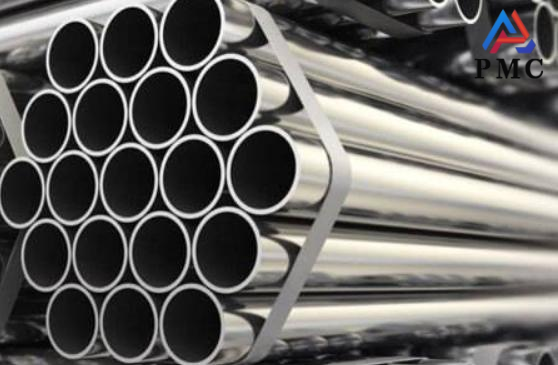
Stainless Steel Seamless Pipes vs Alloy Steel Seamless Pipes
Stainless steel seamless pipes and alloy steel seamless pipes are two completely different types of seamless pipe. Their core differences lie in composition, main performance, and application scenarios. Simply put, one is for corrosion resistance and the other is for strengthening. The three major differences between stainless steel seamless pipes and alloy steel seamless pipes are carefully summarized.
1. Different materials and ingredients
This is the most fundamental difference between stainless steel seamless pipes and alloy steel seamless pipes.
Stainless steel seamless pipe: Its main feature is that it contains a high proportion of chromium (Cr), usually above 10.5%, and elements such as nickel (Ni) and molybdenum (Mo) may be added. Chromium forms a dense passivation film on the surface of the steel. This film has strong corrosion resistance, especially in harsh environments such as humidity, acid and alkali.
Alloy steel seamless pipe: It is based on carbon steel and is made by adding one or more alloying elements (such as chromium, molybdenum, nickel, vanadium, manganese, etc.) to improve the mechanical properties of steel (such as strength, hardness, and heat resistance), rather than taking corrosion resistance as the main goal. Its chromium content is usually much lower than that of stainless steel and is not enough to form a passivation film to resist corrosion. Although alloy steel also has a certain corrosion resistance, it is far less than that of stainless steel.
2. Different main performance focuses
Stainless steel seamless pipe: The most core performance is excellent corrosion resistance. It can remain stable in various corrosive media (such as acid, alkali, and salt solutions) and humid environments and is not easy to rust. The mechanical strength and hardness of stainless steel seamless pipes are usually lower than those of alloy steel seamless pipes, but they have better ductility and toughness.
Alloy steel seamless pipe: The main properties are high strength, high hardness, high temperature resistance and low temperature resistance. By adding alloy elements, it can maintain good mechanical properties under extreme temperatures and high pressures. For example, alloy steel pipes containing Cr and Mo can maintain excellent strength and creep resistance at high temperatures, but their corrosion resistance is usually not as good as stainless steel seamless pipes.

3. Different application scenarios
Due to different performance focuses, the application fields of stainless steel seamless pipes and alloy steel seamless pipes are also very different.
Stainless steel seamless pipe:
Due to its excellent corrosion resistance and hygienic properties, it is widely used in corrosion-sensitive fields.
1. Chemical plants: transporting various corrosive chemical fluids.
2. Food and pharmaceuticals: used for pipelines with extremely high requirements for hygiene and cleanliness.
3. Marine engineering: used in ship pipelines and seawater desalination equipment to resist chloride ion corrosion.
National standards: GB/T 14976 "Stainless steel seamless pipes for fluid transportation", GB/T 13296 "Stainless steel seamless pipes for boilers and heat exchangers", etc.
Alloy steel seamless pipe
Due to its high strength and resistance to high temperature and high pressure, it is mainly used in the following fields.
1. Power Industry: Used in the manufacture of high-pressure boiler tubes (such as P91 and 12Cr1MoV), operating in high-temperature and high-pressure environments.
2. Aerospace: Used in the manufacture of high-strength, lightweight structural parts.
3. Petrochemical Industry: Used in the manufacture of high-pressure pipelines and heat exchangers to withstand high pressure and temperature.
National Standards: GB/T 5310 "Seamless Steel Tubes for High-Pressure Boilers" and GB/T 9948 "Seamless Steel Tubes for Petroleum Cracking," etc.
Conclusion
|
Feature |
Stainless steel seamless pipe |
Alloy steel seamless pipe |
|
Main ingredients |
chromium (Cr), nickel (Ni), etc. |
Chromium, molybdenum, vanadium, manganese, etc. |
|
Core performance |
corrosion resistance, heat resistance |
high strength, high and low temperature resistance, wear resistance |
|
Typical applications |
chemical, food, pharmaceutical, marine |
high-pressure boilers, petroleum, aerospace, machinery |
|
Representative brand |
12Cr1MoV, P91, 35CrMo |
The choice of stainless steel seamless pipe or alloy steel seamless pipe depends on specific needs. If corrosion resistance is the primary consideration (such as conveying corrosive media or requiring high cleanliness), stainless steel seamless pipe should be selected. If it is necessary to withstand huge mechanical loads under extreme conditions such as high temperature and high pressure, alloy steel seamless pipe should be selected.
Read more: Seamless Carbon Steel Pipe vs Seamless Alloy Steel Pipe
- 【Prev】 : Application of Thin-walled Seamless Steel Pipe
- 【Next】 : API 5L Carbon Steel Pipe


